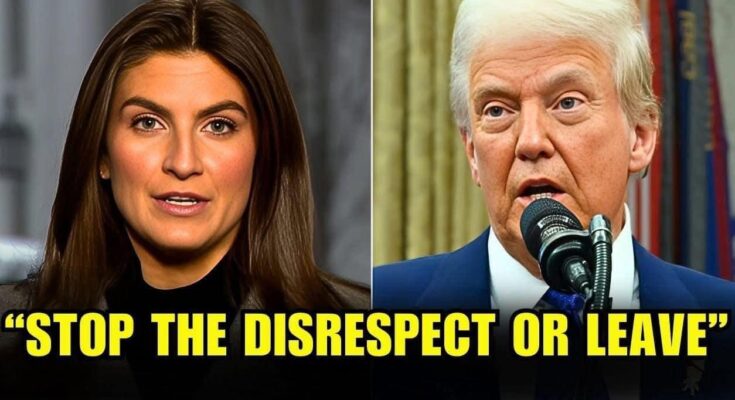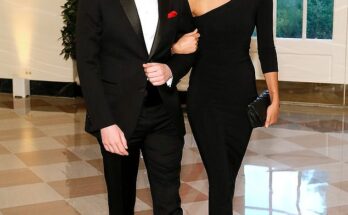In a charged press conference held in the Oval Office, President Donald Trump confronted CNN anchor Kaitlan Collins in a tense and adversarial manner, alleging her partiality and challenging her credibility before an audience of reporters. The situation intensified rapidly, capturing significant media attention and exacerbating the ongoing conflict between Trump and the press, especially CNN.
The situation arose when Collins questioned Trump about his trust in Russian President Vladimir Putin. Considering the ongoing debates regarding Trump’s ties to Russia, the inquiry was significant, and Collins was resolute in obtaining a clear response. At first, Trump replied with caution, stating, ‘I believe he would prefer to see some developments.’ Nevertheless, his demeanor changed rapidly as Collins sought further clarification។
Cutting her off mid-sentence, Trump transformed the dialogue into a personal assault. ‘I recognize he [Biden] is your friend,’ he remarked, suggesting that Collins lacked objectivity as a journalist and was instead aligned with his political opponent, Joe Biden. This allegation appeared to surprise Collins, yet she endeavored to maintain her focus, making another attempt to redirect the discussion to the initial inquiry. Nevertheless, Trump was not done.
“You consistently pose the same unpleasant inquiries,” he remarked, gesturing dismissively. “CNN lacks credibility. It is widely recognized that your organization disseminates false information. You propagate lies and misinformation on a daily basis.”
Collins, recognized for her incisive inquiries and steadfastness, promptly responded. “Mr. President, it is my responsibility to pose questions. You have not addressed mine,” she stated, unfazed by his assault.
Collins, recognized for her incisive inquiries and steadfastness, promptly responded. “Mr. President, it is my responsibility to pose questions. You have not addressed mine,” she stated, unfazed by his assault.
The atmosphere in the room became charged as journalists exchanged looks, anticipating yet another intense confrontation between Trump and the press. This was not the first instance of Trump directly challenging Collins—she had been excluded from a White House event in 2018 due to her relentless inquiries—but this occasion was especially fervent, underscoring the increased political significance as the 2024 election approached.
Collins made another effort to reaffirm her position, stating with composure, ‘Mr. President, I am inquiring about your views on Putin, not on Joe Biden.
However, Trump was unyielding. ‘That is precisely my point,’ he responded. ‘You feign neutrality, yet your purpose is to criticize me. I recognize the situation, and so does everyone else.
At this juncture, other journalists present in the room started to whisper among themselves. A few tried to redirect the discussion towards policy matters, yet Trump remained fixated on Collins. He subsequently transitioned to his well-known criticisms of CNN, labeling the network as ‘a disgrace’ and implying that they were ‘losing viewers due to public fatigue with their falsehoods.’
The exchange between Trump and Collins persisted for several minutes until a White House staff member stepped in, attempting to redirect the conversation to another reporter. Nevertheless, the altercation had already left its mark. Shortly thereafter, videos of the interaction inundated social media, prompting responses from both Trump supporters and opponents. His supporters praised his rebuttal of what they perceived as a ‘partisan liberal journalist,’ while media analysts and Trump’s critics condemned him for his ongoing antagonism towards the press.
CNN promptly addressed the altercation by issuing a statement in support of Collins. ‘Kaitlan Collins is a distinguished journalist tasked with posing challenging yet equitable inquiries to those in authority. The citizens of America are entitled to transparency and accountability, rather than unfounded assaults on the freedom of the press.’
This recent interaction contributed yet another segment to Trump’s extensive history of conflict with the media. Throughout both his presidency and subsequent period, he consistently engaged in disputes with journalists, frequently denouncing negative reports as ‘fake news’ and directly addressing particular reporters during press conferences. His contentious relationship with Collins, especially, has persisted for years, as she has established a reputation for consistently questioning him during these events.
Political analysts observed that Trump’s interaction with Collins exemplified a wider strategy. By openly confronting journalists and labeling challenging inquiries as partisan, he bolstered his narrative of being unjustly treated by the media—a strategy that strongly resonated with his base. His skill in transforming press confrontations into rallying points has been a hallmark of his political journey, and this occasion was no exception.
Collins’ management of the exchange received significant acclaim from her journalist peers, who regarded it as a demonstration of the media’s role in holding authority accountable, even in challenging situations. Numerous reporters expressed their endorsement on Twitter, with several highlighting the well-documented trend of Trump targeting female journalists, particularly those who questioned him.
The clash highlighted the significant divide within the media landscape in America. Right-leaning media portrayed the incident as yet another instance of Trump ‘resisting’ what they termed ‘mainstream media corruption,’ whereas left-leaning outlets condemned him for attempting to undermine credible journalism once more.
As the aftermath of the press conference unfolded, it became evident that this moment would have enduring consequences. For Trump, it solidified his position among supporters who perceive the media as an opponent. For Collins, it represented yet another challenge of perseverance in a career dedicated to traversing the turbulent realm of political journalism. Moreover, for the media landscape overall, it served as a further indication of the profound divisions and contentious dynamics between the press and the presidency in contemporary American politics.



